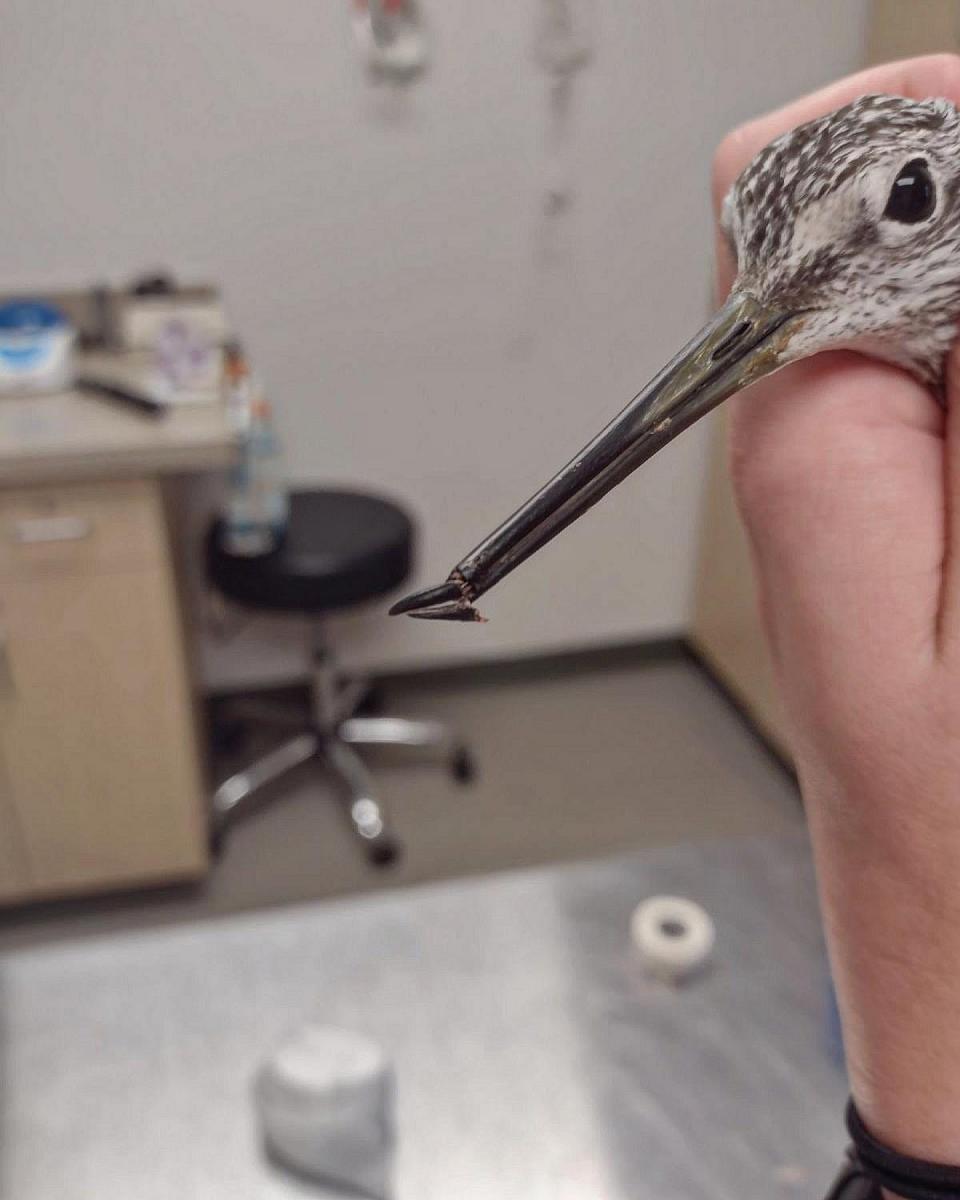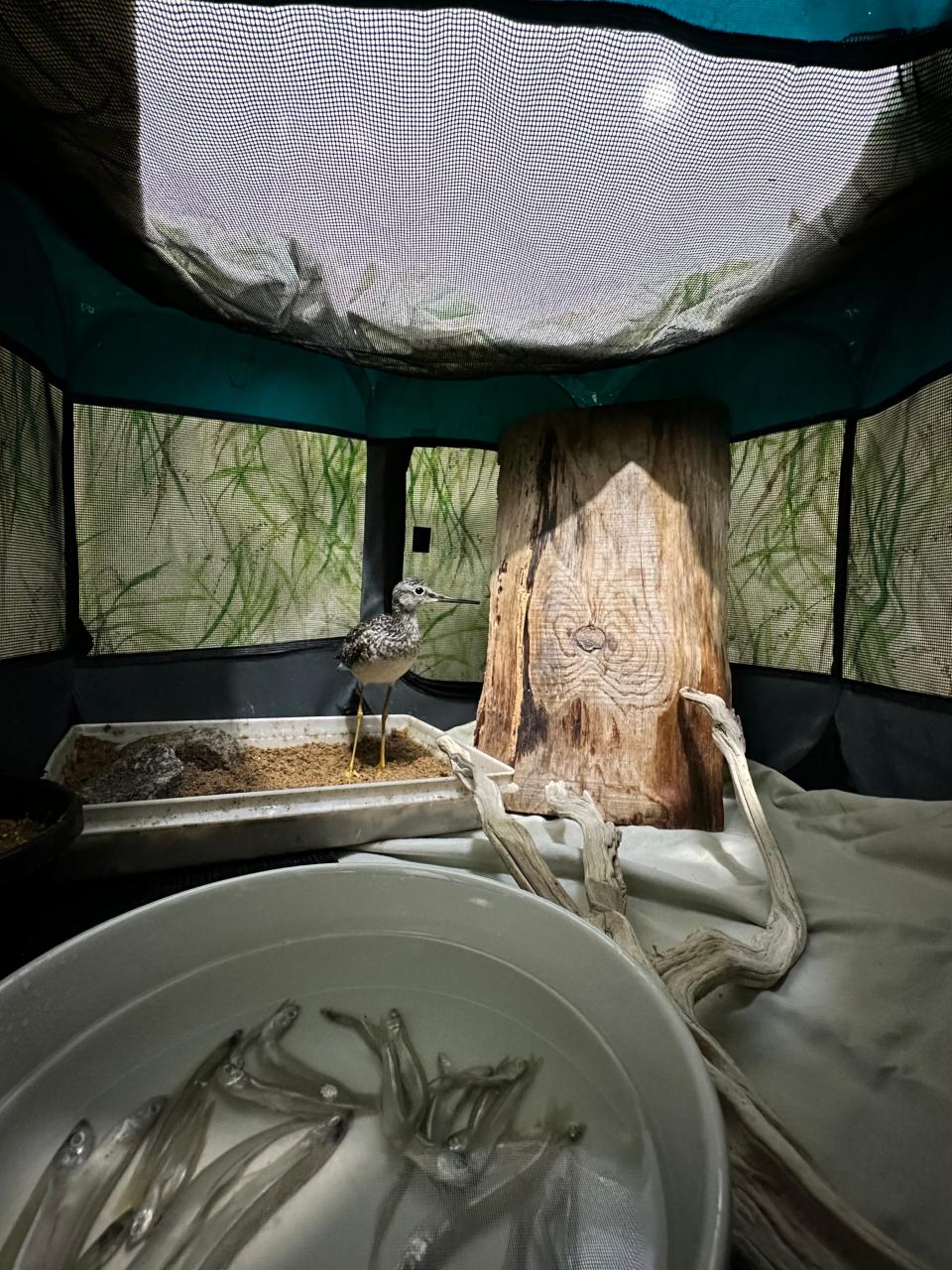Revenge of the clams: How shellfish are fighting off their bird predators in Maine
YORK, Maine — Local clams appear to be fighting back against their avian predators after the Center for Wildlife in Cape Neddick received two recent reports of birds with the shellfish clamped to them.
“Apparently, this is the season of the revenge of the clams,” the Center for Wildlife posted Sept. 9 on Facebook. The post included a photo of a greater yellowlegs in their care whose bill had been broken at its tip by a clam.
The shorebird, which hunts clams, was found in Portland, pinned to the sand with its beak buried, according to the Center for Wildlife. They said rescuers pulled the bird out to find the clam “firmly clasped to the tip of her beak.”

They were able to remove the clam, but the bird's beak was broken. The photo shows the tip of the bird’s beak crushed and nearly severed.
This was the second instance in which a bird was found to be hurt by a clamped clam, according to the Center for Wildlife. The same week, they released an egret brought from Scarborough that lost a toe due to a clam.
“It probably happens more often than we know,” said Abby Schofield, the Center for Wildlife’s clinic coordinator.
A leg up: Beachgoers help Kennebunk man recover lost prosthetic limb at Wells Beach
Birds attacked by clams not easy to track
The Center for Wildlife treats thousands of injured wild animals and birds each year. Schofield said clam bite cases are seen “here and there.”
Tracking clam bites with precision is not easy, though, and most animal injuries are a mystery, she said. If one comes from the roadside, she said it is easy to assume they were hit by a car. However, she said the origin for most injuries is difficult to tell.
Pre-existing injuries can make it even harder to determine what an animal has gone through. The egret that lost its toe to a clam already had a healed amputated toe on its other foot.
“It’s possible that bird had gotten itself in the same predicament before,” Schofield said.
More: Maine's puffin colonies recovering in the face of climate change
Bird poised to recover from injuries sustained by clam's grip
The greater yellowlegs with a damaged beak was in the care of the Center of Wildlife on Tuesday. Schofield said the tip of the bird’s beak was trimmed off and smoothed under anesthesia.
The beak, made of bone and keratin, can be a challenge to restore when also helping the bird eat on its own while not reinjuring it.
This week, Schofield said, the bird was eating and gaining weight.
“The bird will be monitored to make sure the beak grows properly and can eat its natural diet before being released,” Schofield said.

With two cases of clam bites in the same month, officials don't know what to make of it.
The clam’s natural instinct is to close its shell for defense, Schofield said.
“I think these two cases coming in so close together is a coincidence,” Schofield said. “The rescuers were willing to lend a hand in the right place at the right time.”
Porpicide?: Dolphins are killing porpoises. Scientists don't know why.
This article originally appeared on Portsmouth Herald: Clams bite back: Two birds injured by shellfish in Maine

